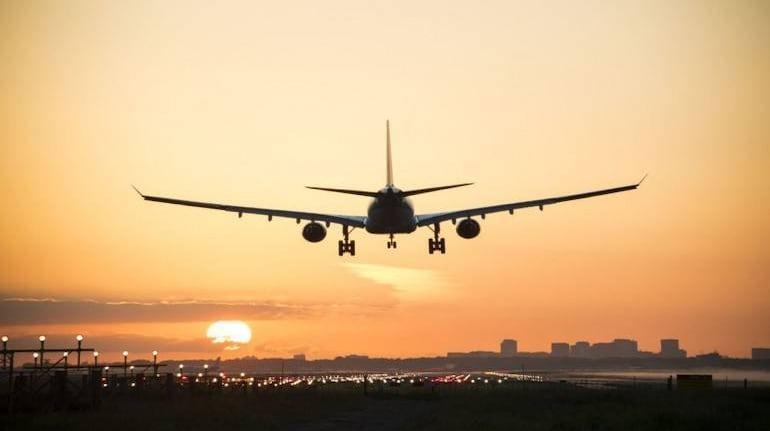
From how it began to how it is ending, 2021 has been a long year for airlines in India. It started out on a positive note, quickly flew into the harsh reality of the deadly second Covid wave, then, just when things were looking grim, the wave subsided, vaccination rates went up and passengers were back up in the air, so much so that the festival season saw airports congested, once again.
While traffic has hovered above the 3 lakh passengers per day mark, it is yet to breach the pre-Covid average daily number. Here is a look at how 2021 played out for Indian aviation.
New Civil Aviation Minister
India got a new civil aviation minister in Jyotiraditya Scindia, who was inducted into the Union Cabinet in July. His predecessor Hardeep Singh Puri was elevated to cabinet rank but was divested of the Civil Aviation portfolio. The new minister got cracking, completing a few tasks but also falling short on a few.
Capacity caps gone, but fare caps remain
In an unprecedented move, the government had imposed both capacity and fare caps. While capacity caps meant that airlines could operate only a certain percentage of the approved schedule, fare caps meant the airlines could not price lower than a certain fare (floor) and higher than a particular fare (ceiling).
As traffic picked up, the capacity caps were withdrawn, though the fare caps remain. Unfortunately, there is no guarantee that the capacity caps won’t make a comeback.
The year of air bubbles
While domestic flying is coming closer to pre-Covid levels, international flights are still a rarity. Every country came up with different measures to look for ways to resume international flights selectively. India was no exception, taking up air bubbles as a measure for deciding, on a reciprocal basis, the number of flights allowed. It also agreed on entry measures and later on reciprocal acceptance of vaccine and vaccination certificates.
As things stand today, India has an air bubble arrangement with 34 countries.
Air India sale
If there ever was an achievement across the last decade or more, it is the successful sale of Air India. The intention to sell was expressed about two decades ago, but the sale happened in the worst of times for aviation.
Eventually, the Tata group bagged the airline. But this is just a small step for the group, which now has to turn the behemoth around.
IndiGo’s domestic expansion and fleet renewal
Pre-pandemic, IndiGo was on an international expansion spree, which came to a halt in March 2020. The airline went into overdrive with its fleet renewal, aiming to rid itself of all the A320ceos from its fleet by early 2023 and having an all-NEO fleet for its Airbus operations. While lessors were running from pillar to post, IndiGo decided to pay up but make the most of it by renegotiating, from the looks of it.
The airline also went in for a domestic expansion, like never before. It announced the launch of seven new stations in one go early in the year and followed this up with additional stations such as Gwalior and a return to Jabalpur in the second half of the year.
None went down and one came up
2020 was a year of challenges and without any cash support from the government, airlines were finding it difficult to stay in the air. But 21 months into the pandemic, all the airlines are still flying, with some adding resources and restoring salaries in part.
If that wasn’t enough, flyBig started operations, though the start has been far from magnificent and the airline hasn’t grown beyond a single plane. In addition, Akasa has placed an order for 72 B737 MAX aircraft.
SpiceXpress carved out
All eyes have been on SpiceJet and its survival strategy. The airline has been struggling to make ends meet and has a negative net worth of over INR 3,500 crore. In one sweep, the airline carved out SpiceXpress as a separate entity, with shareholder approval. The valuation was INR 2,555.77 crore, on a slump sale basis. While the legalities to carve out SpiceXpress are pending, when the process is complete, it will give SpiceJet a shot at sustainability.
SpiceJet has been activating its MAX aircraft, which were grounded since March 2019, and returning older aircraft to lessors. The airline, which is in a legal battle over its debts, will continue to be on survival watch.
Go FIRST rebranding and IPO preparation
Go Air, now Go FIRST, has had a turbulent past and a turbulent year. As part of a rejig, it appointed Kaushik Khona as CEO, for the second time. What followed was unprecedented. As the airline headed for its IPO, which was delayed, it had to rebrand itself, with the draft red herring prospectus letting everyone know the challenges within the Wadia family that led to the rebranding.
The year is not yet over
With another fortnight to go for the year to end, there could still be some twists in the tail. If there is one thing that everyone is watching for, it is the IndiGo AGM on December 30, to see if promoters Rahul Bhatia and Rakesh Gangwal resolve their differences.
Discover the latest Business News, Sensex, and Nifty updates. Obtain Personal Finance insights, tax queries, and expert opinions on Moneycontrol or download the Moneycontrol App to stay updated!
Find the best of Al News in one place, specially curated for you every weekend.
Stay on top of the latest tech trends and biggest startup news.